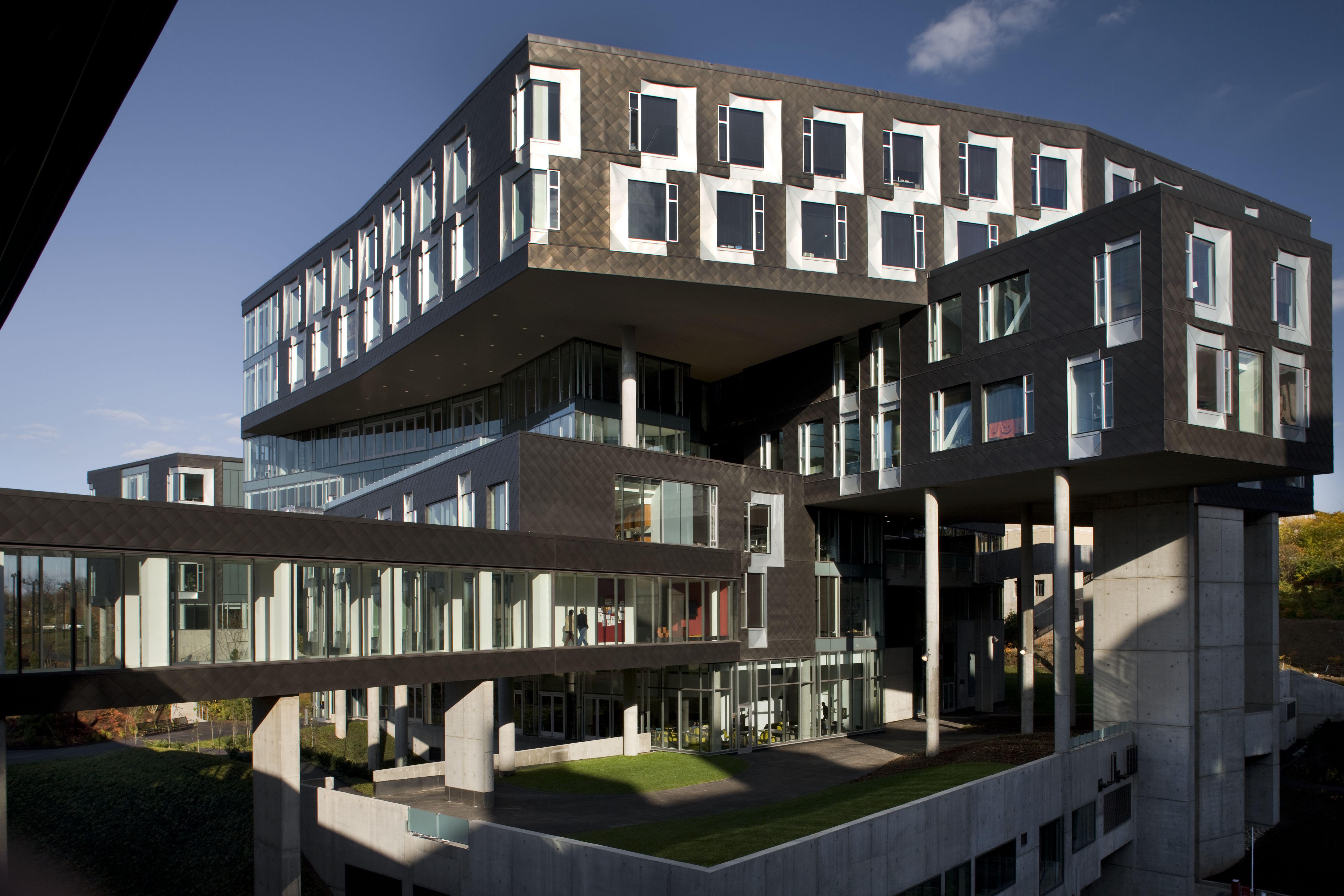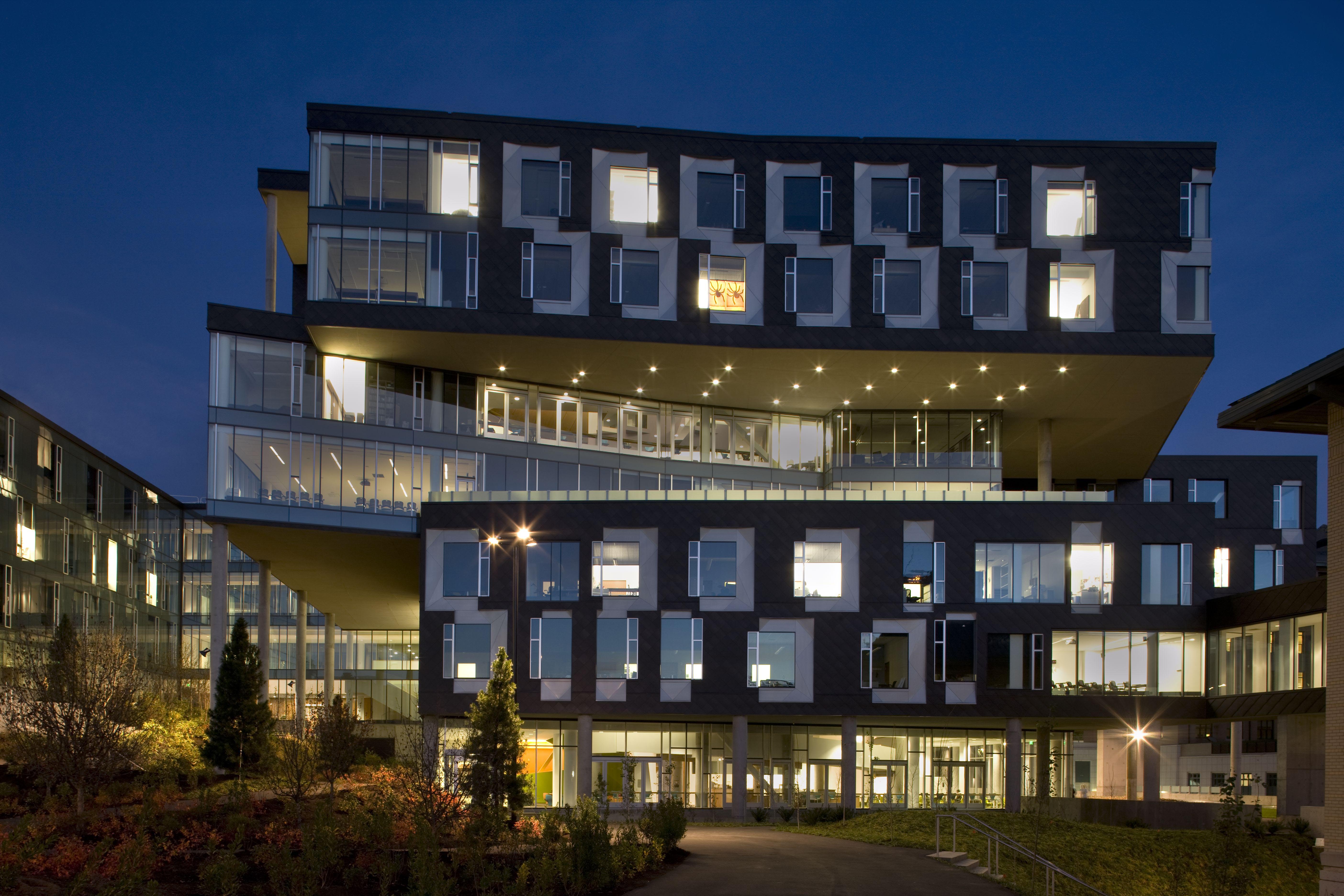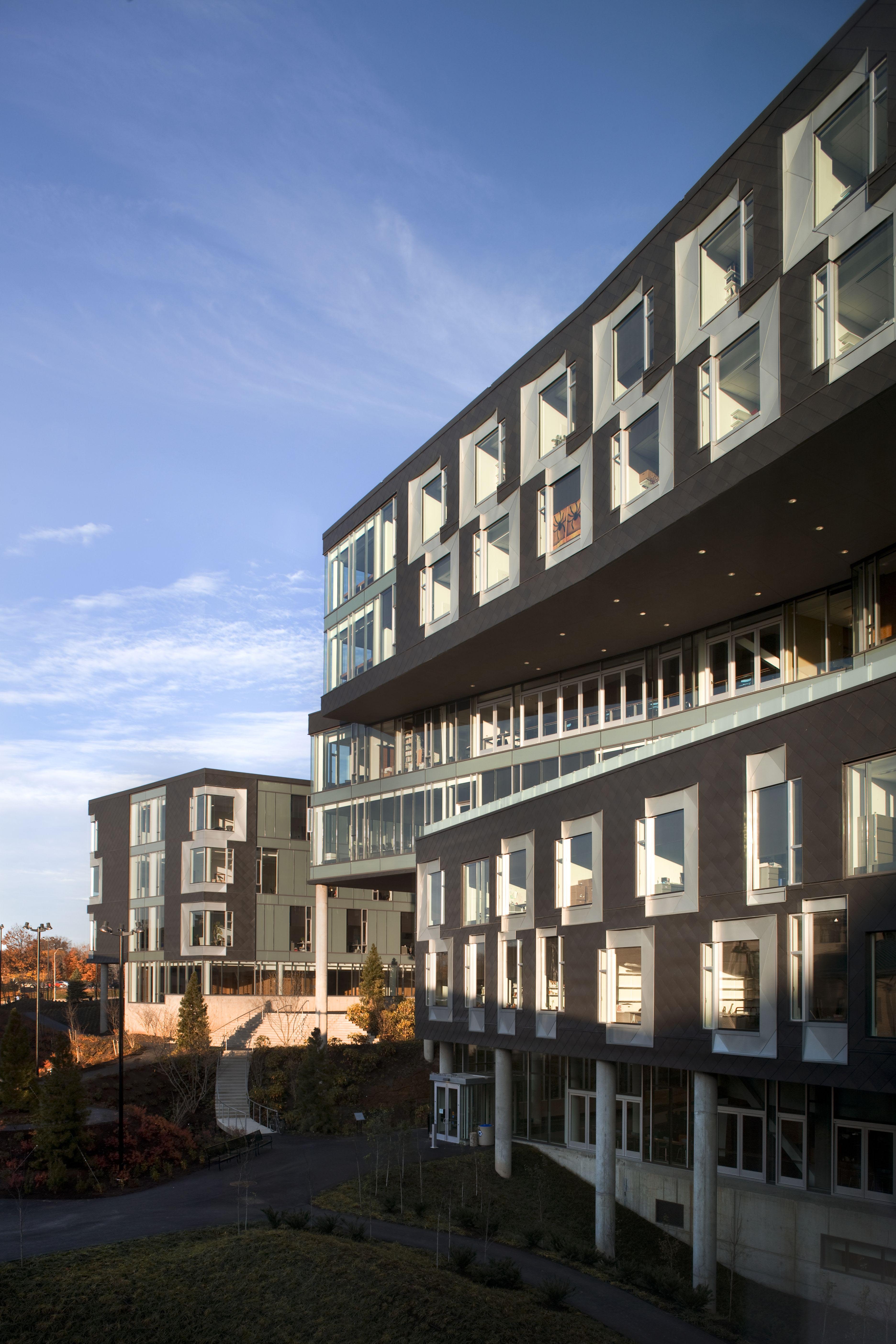Carnegie Mellon's Gates and Hillman CentersAwarded LEED® Gold Certification
Byron SpiceWednesday, November 30, 2011Print this page.

Buildings Win Acclaim for Green Design, Construction, Operation
PITTSBURGH-Carnegie Mellon University announced today that the Gates Center for Computer Science and the Hillman Center for Future-Generation Technologies have been awarded LEED® certification at the Gold level established by the U.S. Green Building Council (USGBC) and verified by the Green Building Certification Institute.
"Construction of the Gates and Hillman centers offered a great opportunity for Carnegie Mellon to demonstrate its commitment to energy and water conservation and to sustainable practices," said Ralph Horgan, associate vice provost for campus design and facility development. "We've been delighted with the results since the School of Computer Science moved in two years ago and are gratified that the project now has achieved LEED Gold certification."
The Gates and Hillman centers join 10 other CMU buildings and more than 100,000 projects overall that currently participate in the USGBC's LEED rating systems. To become LEED Gold certified, the buildings had to meet exacting standards for energy use, lighting, water and material use, as well as incorporate a variety of sustainable strategies.
"We are particularly proud of the role that computer science played in making these buildings sustainable," said Guy Blelloch, a professor of computer science and head of the faculty-staff committee that helped guide the design. "Computer simulation was an essential tool in designing the buildings to be energy efficient and computers continue to cut energy use by carefully monitoring and controlling heating, lighting and ventilation systems."
The buildings, designed by Mack Scogin Merrill Elam Architects of Atlanta, Ga., enclose 217,000 square feet of classrooms, offices and laboratories. They also serve as a crossroads for the 143-acre campus, with five main entrances on three levels and two major pedestrian bridges.
Yet the project more than doubled the amount of green space that existed on the 5.6-acre site, which previously included parking lots and several buildings. All surface parking was replaced by a 150-space underground garage and the new buildings boast five green roofs and a winter garden. Landscaping was designed by Michael Van Valkenburgh Associates of Brooklyn, N.Y., and Cambridge, Mass.
"An extraordinary collaborative effort between the design team, the university administration and the School of Computer Science enabled us to identify, evaluate and act on a wide range of design strategies to realize an environmentally responsible project," said architect Mack Scogin. "The fundamental design principle was to do so without compromising the exceptional functional and experiential aspirations inherent to the visionary building program, but by actually enriching them. This goal was not only met - it has exceeded our initial expectations."
During construction, managed by general contractor PJ Dick of Pittsburgh, more than 19,000 tons of on-site construction waste - almost 98 percent of the total - was reused or otherwise diverted from landfills. More than 15 percent of the building materials were manufactured using recycled materials and 30 percent of the building materials were manufactured within 500 miles of Pittsburgh. More than half of the wood used in the buildings came from sustainable forests.
The buildings include systems for collecting about half a million gallons of rainwater and snowmelt each year. The use of this gray water for flushing toilets, combined with the installation of low-flow lavatories and low-flush urinals, cut potable water use in half.
The ventilation system uses rotary heat exchangers called enthalpy wheels to limit energy loss. Occupancy sensors help control lighting and office temperatures throughout the buildings.
"The Gates and Hillman centers' LEED certification demonstrates tremendous green building leadership," said Rick Fedrizzi, president, CEO & founding chair of USGBC. "The urgency of USGBC's mission has challenged the industry to move faster and reach further than ever before, and the Gates and Hillman project serves as a prime example with just how much we can accomplish."


Byron Spice | 412-268-9068 | bspice@cs.cmu.edu
